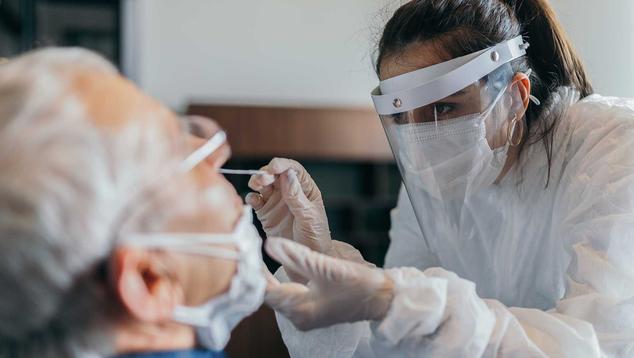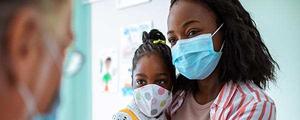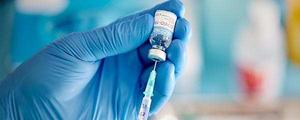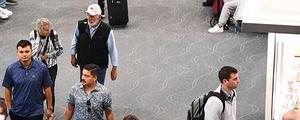Story Highlights
- 31% now say U.S. coronavirus situation is improving, down from 51% in October
- Meanwhile, percentage worried they will be sickened is steady near 40%
- Also steady rates of avoiding public places and social gatherings
WASHINGTON, D.C. -- After improving in October, public optimism about the course of the coronavirus situation has once again dimmed as COVID-19 cases attributed to the Delta variant have risen, and the Omicron virus looms as the next obstacle to ending the pandemic. At the same time, Americans are no more worried than they have been in recent months about personally catching the virus, nor are they less likely to be venturing out in public.
Pandemic Optimism Recedes
The percentage of U.S. adults believing the coronavirus situation is getting better nationally fell from 51% in October to 31% in Gallup's latest COVID-19 tracking survey, conducted Nov. 29-Dec. 5. Accordingly, the percentage saying the situation is getting worse has about doubled, rising from 18% to 35%, while nearly a third continue to say it's staying about the same.
October had been the first month since June that Americans' outlook for the situation was more positive than negative, after turning sharply negative over the summer. The outlook was significantly more positive in the first half of the year, during the vaccine rollout -- peaking in June, when 89% said the situation was getting better.

Line graph. Monthly trend from April 2020 to December 2021 in % of Americans saying the coronavirus situation in the U.S. is getting better. Figure was consistently low throughout 2020, ranging from 12% to 38%. Optimism increased sharply in February 2021 and peaked at 89% in June before plunging by August to 15%. It rose to 51% in October but is back down to 31% in December.
Infection Fear Hasn't Changed
Despite shifts in their perceptions of how the pandemic is going, Americans' personal level of worry about getting COVID-19 has been flat since August near 40%, including 38% in the latest survey.
Gallup recorded much lower concern during the spring and early summer, coinciding with people's improved outlook for the pandemic as the nation was getting vaccinated and the number of new COVID-19 cases was rapidly declining. In 2020, before the creation and approval of the vaccines, the slight majority of Americans were typically worried.

Line graph. Monthly trend from April 2020 to December 2021 in Americans' level of worry that they will get the coronavirus. The percentage very or somewhat worried was constant near 55% throughout 2020. It then dipped to 35% in March 2021 and 17% in June, but has been closer to 40% since August. It is 38% in December.
Social Distancing Behaviors Also Unchanged
Along with consistent levels of worry about getting the coronavirus, the percentage of Americans reporting they are avoiding certain public situations because of their concern about the coronavirus hasn't changed in December.
Close to half (46%) continue to say they have avoided large crowds over the past seven days, and 40% have avoided traveling, while fewer have avoided public places (29%) or small gatherings (21%). These social distancing behaviors have largely been stable since May, except for September, when slightly more eschewed large crowds and traveling as perceptions of the coronavirus situation worsened.
All avoidance behaviors have been far less common than earlier in the year, and in 2020, before the vaccines were widely available.

Line graph. Monthly trend from January to December 2021 in the percentages of Americans avoiding certain behaviors because of concerns about the coronavirus. In December 2021, 46% are avoiding large crowds, 40% are avoiding traveling, 29% are avoiding public places and 21% are avoiding small gatherings. These are largely consistent with the rates since May 2021 after falling sharply from 2020 and early 2021.
Additionally, 70% of Americans report having worn a face mask for protection from the coronavirus in the past seven days, in line with the rate each month since August. Mask-wearing had dipped to 60% in July from 68% in June after exceeding 90% at points in 2020 and in January 2021.
Bottom Line
Throughout the pandemic, Americans have been cognizant of changes in its severity, including this summer, as the highly contagious Delta variant swept through the country; this fall, as it tapered; and more recently, as the Omicron variant emerged as a new threat. In each case, perceptions of whether the national situation was getting better or worse moved accordingly.
Yet, Americans' concern about their personal risk of falling ill remains relatively low, and they are not inclined to return to stringent social distancing. That could be partly attributable to reports that the Omicron variant, while highly contagious, may not produce symptoms that are as severe as for previous versions of the coronavirus. It likely also reflects the fact that most Americans who want to be vaccinated now are, and many have already received their booster.
Whatever the reason, the continuation of October-level rates of personal worry and social distancing into December should be welcome news to the hospitality industry, restaurants and local retailers, given their desire to see Americans out in force during the final days of the 2021 holiday shopping and travel season.
To stay up to date with the latest Gallup News insights and updates, follow us on Twitter.
Learn more about how the Gallup Panel works.




